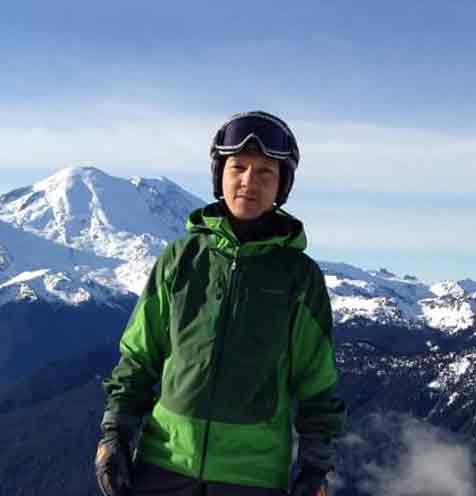Nepal Travel Guide
Nepal is the culturally rich, naturally diverse nation which is home to the lofty, snow-capped mountains and abode to the Buddhism. This charming nation has much more than mountains. Finely balanced between the Indian influence from three sides and Chinese neighborhood in the north, this nation has an amazing geographical landscape from the world’s highest peak Mt. Everest (8848m) up to the lows of 60m in the southern plain within an average width of 193 km. The watershed of Asia, Nepal, has been the prime destination for mountaineering, trekking and other adventurous activities along with the pilgrimage to Lumbini (the birthplace of the Gautama Buddha, the founder of Buddhism) and the holy Hindu shrine of Pashupatinath temple. People here display excellent hospitality, cultural harmony and immense resilience at times of national crisis and trouble.
Geography
Nepal’s diverse geography ranges from below 100 meters to 8848 meters i.e from the northern rim of Gangetic plains to the world’s tallest Mt Everest.
The Elevation Zones in Nepal from south to north are:
- Outer Terai (level plains)
- Siwalik range (about 600m high)
- Inner Terai (between Siwalik and higher foothills)
- Mahabharat range (up to 3000m)
- Middle hills (up to about 2000m)
- Valleys
- Lekhs (above 3000m to 5500m)
- North of Lekhs (over 6700m)
- Trans-Himalaya (Himalayan peaks, over 6700m)
Several river basins and other diverse terrains are there in Nepal suitable for various purposes.
Religion: As per the census of 2011, majority of the population follow the Hindu religion (81.3%) followed by Buddhism (9%). Islam consists of 4.4% of the population.
Arrival to Nepal
Overland
From India the easiest crossing into Nepal is via the Sunauli border adjacent to Nepali town of Bhairahawa. The direct buses from Bhairahawa to Kathmandu take around 8-9 hours. Other entry points via India are Kakarvitta, Birgunj, Belhaia, Jamunaha, Mohana and Gadda Chauki from the eastern Nepal to the western part respectively. The entry from the Tibetan side is by crossing the border at Kodari and takes a bus to Kathmandu that takes around 7-10 hours depending on the road conditions. Visa can be obtained at the entry points.
By Air
Tribhuwan International Airport is the only international airport in Nepal. Several international airlines operate in the route to and from Kathmandu. The national flag bearer Nepal Airlines operates to India, Thailand, Hongkong, China, Malaysia, Dubai, Singapore and other destinations. Other international airlines including Thai Air, Dragon Air, Qatar Air, Indian airlines such as Air India and Jet Air, Turkish Air, China Southern Airlines (from Lhasa, Tibet to Kathmandu) and several others operate from various destinations to this medieval capital city of Kathmandu.
Seasons of Visit
This enchanting nation can be visited round the year. However, for the purpose of trekking autumn (Sept-Nov) and spring (March-May) are the most recommended seasons. Visitors are rewarded with clear sky, good weather and magnificent views in these seasons. Monsoon (Jun-Aug) has rain, muddy trails and less visibility though lush green mountains and valleys are there to be enjoyed. Winter (Dec-Feb) can create difficulty for trekkers going for higher altitudes.
There are rain shadow areas in the Mustang and Dolpo region towards the north-west of Dhaulagiri mountain range as the southern cloud is blocked by the mountains. This makes the monsoon season favorable for trekking to these regions also marked by less crowded trails.
Travel Insurance
For getting compensated for various travel-related risks the tourists are advised to go for travel insurance. Various types of travel insurances are available depending on the coverage of the travel insurance policy. For the trekkers and climbers it is recommended that the insurance policy covers the helicopter rescue and medical treatment expenses as helicopter rescue is the only way in places of high altitude. Tourists should consult with their travel agencies on the matters related to their travel insurance. Several insurance companies offer policies with international coverage as well.
Currency
The Nepalese Rupee is the currency of Nepal. Our currency rankings show that the most popular Nepal Rupee exchange rate is the NPR to GBP rate. The currency code for Nepalese Rupees is NPR.
Banking and Foreign Exchange
Payment in hotels, travel agencies, and airlines are made in foreign exchange. There are plenty of cash machines or ATMs in cities and most will accept cards issued by any of the major international banking networks (Plus, Cirrus, etc.). The majority of ATM’s currently have a maximum withdrawal amount of 10,000Rs (although you can make repeated withdrawals).
Major Credit Cards such as Visa, MasterCard, JCB and AmericanExpress, are readily accepted at most tourist class hotels, restaurants, airlines, and major tourist merchants. Again there is always a transaction fee for processing the cards (this charge is enforced by the banks and not the merchants so please don’t ask for a discount to remove this) and this is usually around 4% (although American Express Fees are considerably higher at around )

